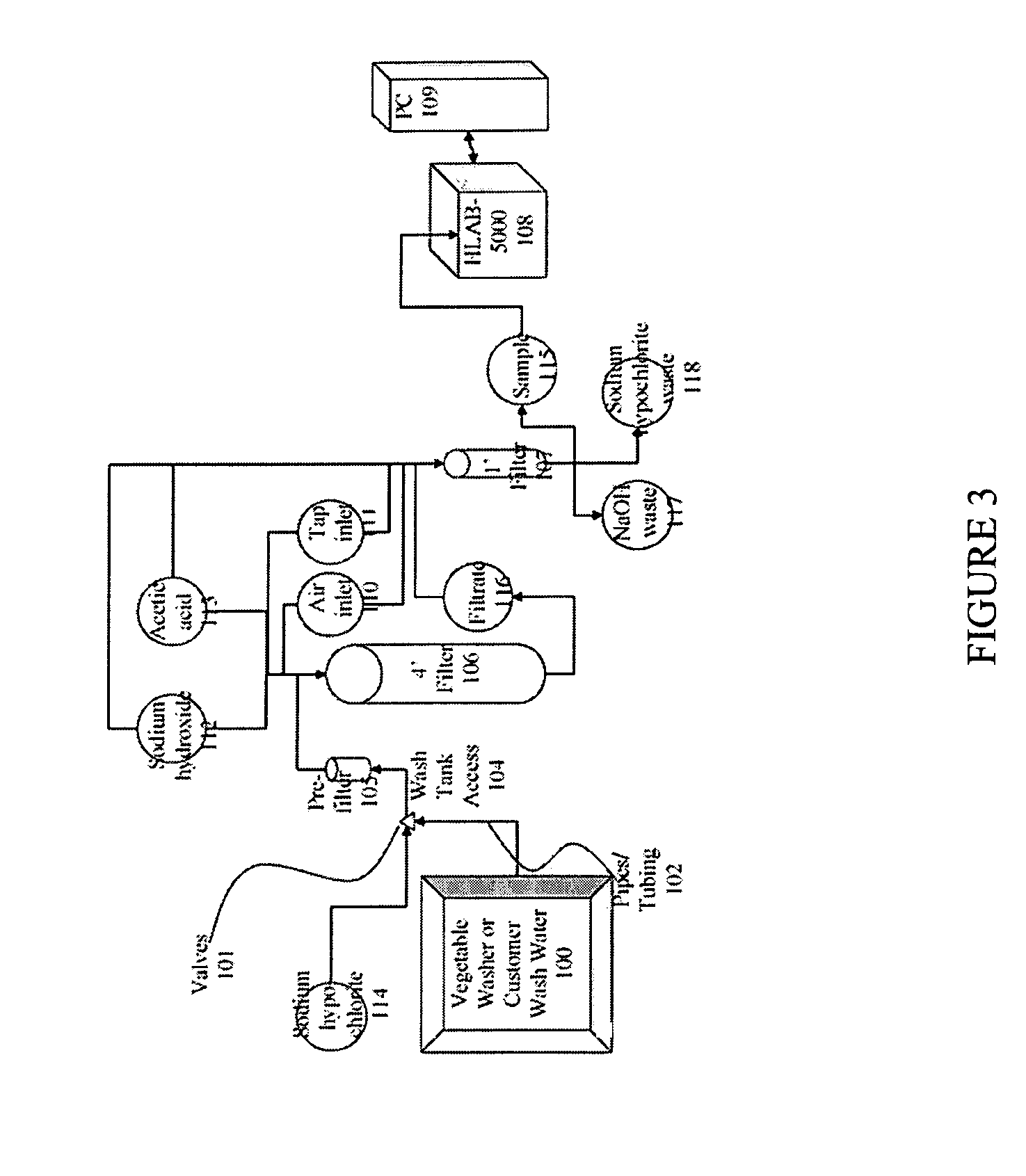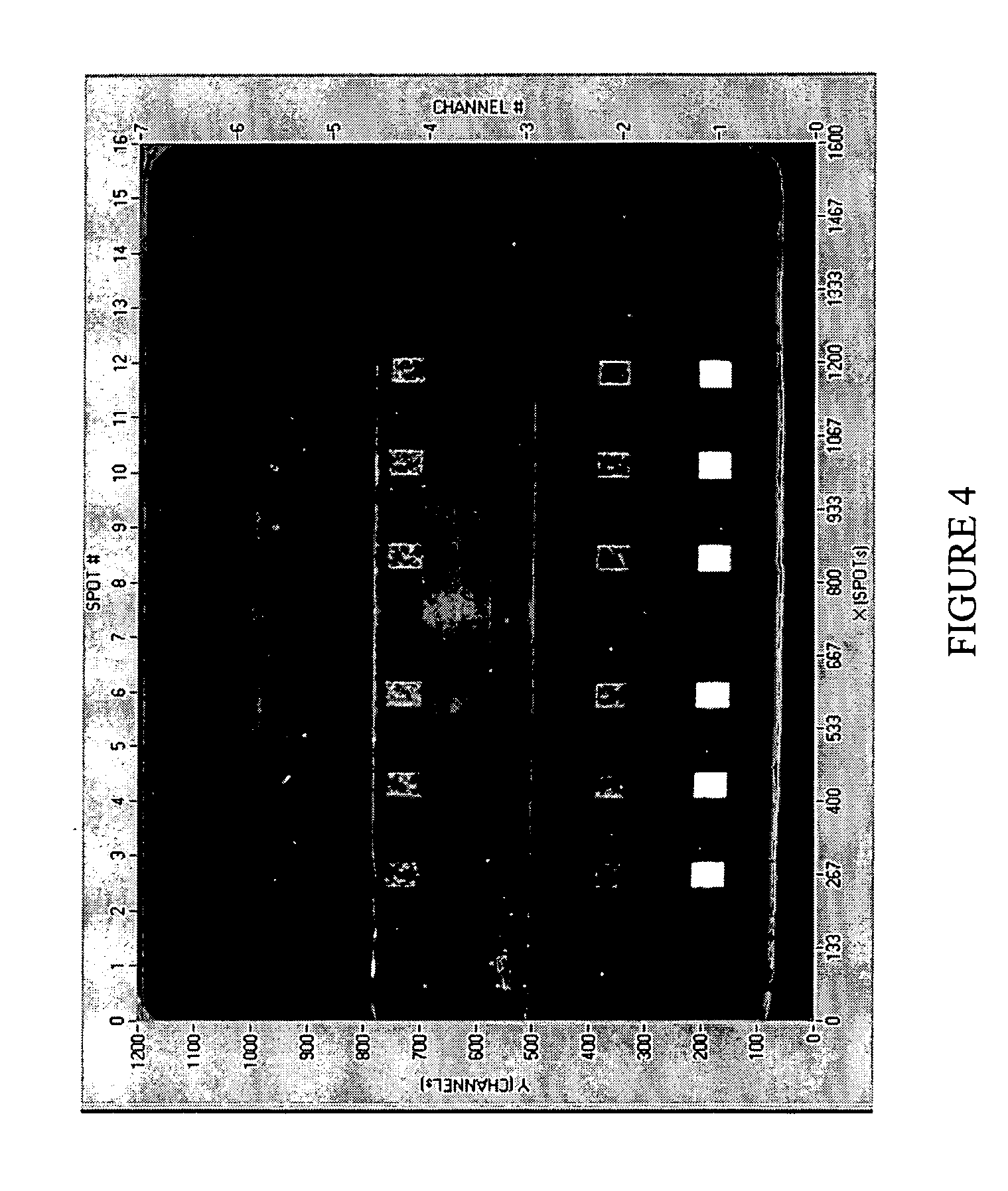Agricultural screening system and method for detection of infectious microorganisms
a screening system and microorganism technology, applied in the field of agricultural screening system and method for detection of infectious microorganisms, can solve the problems of difficult detection, unrepresentative analytical results, complex and skill-intensive analytical chemistry procedures, etc., to reduce process and apparatus/material costs, reduce time and labor requirements, and reduce cold storage and logistical costs
- Summary
- Abstract
- Description
- Claims
- Application Information
AI Technical Summary
Benefits of technology
Problems solved by technology
Method used
Image
Examples
examples
[0031]Test run of spinach. Using a large food specimen of >100 grams to >10 kg (e.g., 20 kg), with single or multiple sequential concentration steps (e.g., starting with 4 kg of spinach per batch, run 5 times, with a total of 20,000 E. coli) followed by an assay tests results in pathogen data without culturing. This significantly shortens the time between specimen collection and test result from days to hours. An example method is carried out as follows: Provide 5 batches (4 kg each) of spinach. Place 200,00 E. coli (2 mL of 1×104 O157:H7 E. coli) on the leaves in the first of the 5 batches, letting them dry on the leaves before processing. Run the 4 kg batch of leaves through the vegetable washing machine with the 8 gallon 90 second spray wash. After the washing machine, run the vegetable wash through the 50 micron filter, 10 micron filter, and the automated filtration unit, until all 8 gallons have been processed. Recover the concentrated sample in approximately 250 mL. Repeat the...
PUM
| Property | Measurement | Unit |
|---|---|---|
| volumes | aaaaa | aaaaa |
| time | aaaaa | aaaaa |
| time | aaaaa | aaaaa |
Abstract
Description
Claims
Application Information
 Login to View More
Login to View More - R&D
- Intellectual Property
- Life Sciences
- Materials
- Tech Scout
- Unparalleled Data Quality
- Higher Quality Content
- 60% Fewer Hallucinations
Browse by: Latest US Patents, China's latest patents, Technical Efficacy Thesaurus, Application Domain, Technology Topic, Popular Technical Reports.
© 2025 PatSnap. All rights reserved.Legal|Privacy policy|Modern Slavery Act Transparency Statement|Sitemap|About US| Contact US: help@patsnap.com



